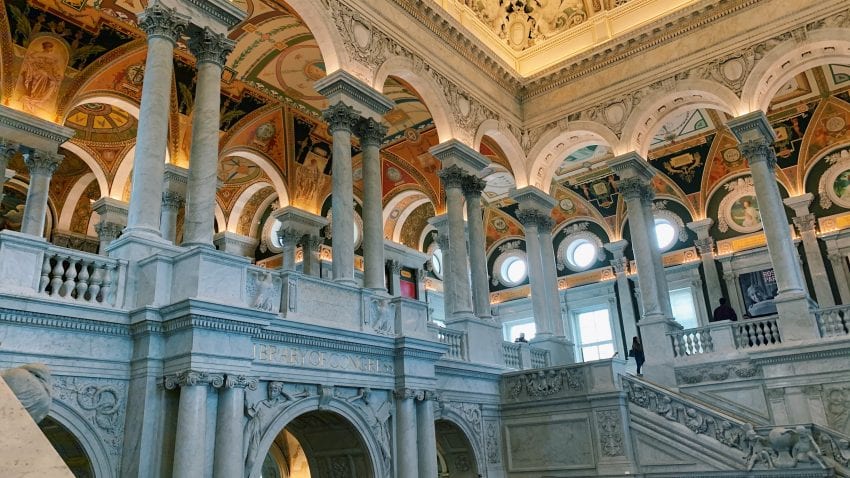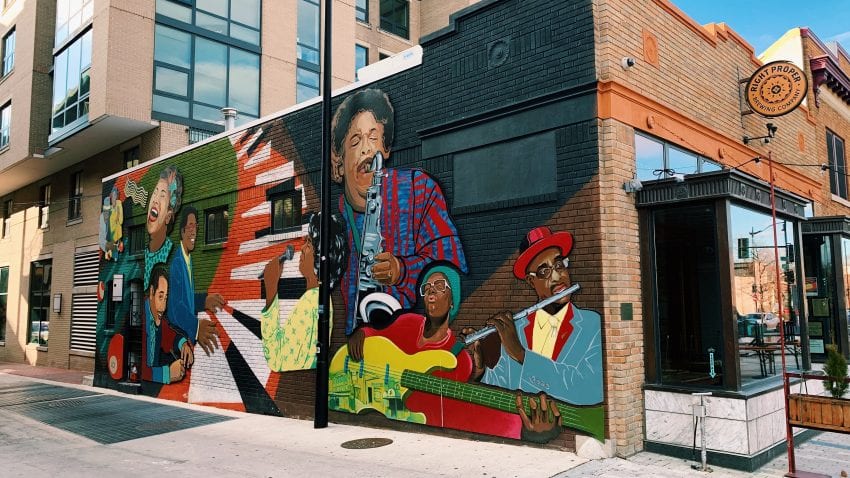262,274 steps, 28 sight visits, 11 performances, 4 meals at Bibibop (with my final meal culminating in a lot of teriyaki sauce on my shirt), and 5 visits to Wawa later, our time in D.C. has come to a close. After countless hours of sitting in a myriad of coffee shops throughout the city, I’ve written four blog posts and drafted my very own policy proposal.
In one of our final class periods, we had the opportunity to pick our top and bottom three sight visits and performances. My “top 3” list was more like a top 10 and my “bottom 3” was quite the opposite. To get a sense of where we visited and what was particularly moving to me, here are my top 10 visits in no particular order:
- Attucks Adams Tour
- Halcyon Arts Lab
- Sheltered at Theater J
- Library of Congress
- Arts Access panel at the Kennedy Center (While we’re on the topic of the Kennedy Center: My Fair Lady and Living the Dream…Singing the Dream were also favorites)
- Dupont Underground
- National Portrait Gallery (specifically The Outwin 2019 and the One Life: Marian Anderson exhibits)
- Washington Performing Arts
- Pipeline at Studio Theater
- District Community Playback’s performance at Anacostia Art Center

Library of Congress

Mural from Attucks Adams walking tour
These sight visits did everything from providing important historical background on U Street and Black Broadway, commenting on the Syrian refugee crisis through the lens of the Holocaust, to learning about the Men, Women and Children of the Gospel Choirs. What I’m trying to convey is that we had an extremely broad scope while here in D.C., and if I were to discuss the impact of every sight visit and performance, I would far exceed our 1,500 word limit.
The purpose of this blog post isn’t to tell you about the copious amounts of teriyaki I spilled on my shirt or even the impact that District Community Playback’s performance had on me. My purpose here is to look at the bigger picture of this trip and maybe even impart some wisdom on what I’ve learned and how I’ve grown.
If there’s anything that I can take away from this course, it’s that we all have our own civic identity and the power to choose what we do with it. I’ve learned that I have an opportunity to actually have an impact in my community, wherever that might be. Visiting these organizations and government agencies has highlighted that the system is larger than any one person. But, by entering these systems, whether or not it’s a nonprofit, for profit, or a governmental institution, you can have a say on what goes on in these systems that make, produce, and ultimately define art in our country.
At every sight visit, we asked about everyone’s path to their current job. By asking this, I learned that one’s major and degree does not define the path they may take post graduation. I’m a music education major, but just because I’m getting a degree in teaching, that doesn’t mean I’ll be in a classroom for the rest of my life. We met with Kathleen Dean, another music education major, who works in development at the Washington National Opera. Hearing about Kathleen’s path to the WNO calmed the hyper-curious liberal arts student I am. I have many passions and am excited to pursue them in my future. This course has shown me the ways I can apply my artistic and academic studies at St. Olaf to my community in many different ways.
One of my biggest takeaways from this trip is the importance of engaging and communicating with the community you are hoping to make an impact on. I’ve learned about this idea of helpful help in past courses at Olaf, but by learning from organizations like Halcyon Arts Lab and District Community Playback, my own ideas on this concept have strengthened and developed. No matter the community you are going into, ask them what they want and need. Knowing this will make me more conscious of the community building, public service, and arts advocacy I participate in in the future.
There are many layers to the relationship between democracy and the arts. In our final class period one of our course leaders, Louis Epstein, pointed out that when it comes to the arts and democracy, it isn’t the government on one side and artists and organizations on the other. Democracy and the arts are intertwined and have a unique relationship with one another. A myriad of factors contribute to that relationship, such as funding and where that funding comes from. Considering this, I have seen how truly connected democracy and the arts are and ways I can make an impact.
As I mentioned earlier, as a part of this course we all had to draft our own policy proposals. With respect to arts policy at a local level, I’m proposing to create a collaborative choir between St. Olaf’s Chapel Choir and Laura Baker Services Association choir for adults of all abilities. The two choirs would rehearse monthly, culminating in a joint performance at Chapel Choir’s spring concert. While this proposal concludes in a performance, what excites me the most is the opportunity for meaningful relationships to be made and community to be strengthened, and isn’t that the point of the arts?
